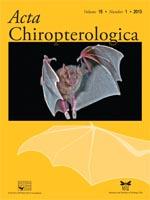Where does a species live? How common is it? Where does it spend its inactive periods? These are basic questions about the biology of a species, which bring key information for application in conservation and management. Unfortunately, this information is available for only a minimum fraction of all animal species. Using 1) ecological niche modeling with maximum entropy (Maxent), 2) relative abundance estimates using museum records, and 3) field surveys of roosting sites, we report the fraternal fruit-eating bat, Artibeus fraterculus, as having a distribution limited to the Tumbesian ecoregion in Ecuador and west central Peru, being the relatively most abundant bat species throughout its range, with healthy populations which are primarily sustained by cultivated and introduced plants, and using human-made constructions as roost sites. Additionally, we described a large congregation of individuals of this species in a single roost, representing the largest colony reported for the genus Artibeus. These results may indicate resilience of A. fraterculus to human disturbance.
How to translate text using browser tools
1 June 2013
Distribution, Abundance and Roosts of the Fruit Bat Artibeus fraterculus (Chiroptera: Phyllostomidae)
C. Miguel Pinto,
María R. Marchán-Rivadeneira,
Elicio E. Tapia,
Juan P. Carrera,
Robert J. Baker
ACCESS THE FULL ARTICLE

Acta Chiropterologica
Vol. 15 • No. 1
June 2013
Vol. 15 • No. 1
June 2013
bat roost
ecological niche model
Tumbesian ecoregion




